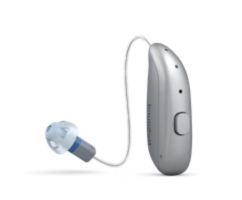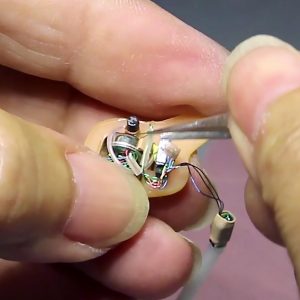Static noise coming from my right hearing aid wasn’t normal.
When my older Seimens hearing aids started making strange noises, it was time to replace them. Because hearing aids can be so expensive and aren’t covered by my insurance plan, painfully I had put it off. As I soon figured out, over the last decade, hearing aids have become even more confusing than shopping for a new car and almost as expensive.
I first visited my local audiologist, in the Chicago area. The audiologist listened to my old hearing aid and advised me that it should be replaced. I initially thought I was in the market for top of the line wiz-bang-wow hearing aids until I heard the prices. I immediately lowered my standards. The price quoted for a set of mid level hearing aids was $4,400. I respectfully declined and thought that I should do a little shopping.
Initially aghast at the prices from my local audiologist, I saw an ad in the local paper for $899 per ear hearing aids at a neighborhood Miracle Ear office. Miracle Ear is a well known national hearing aid sales chain that has been around for many years. There, a fastidious young man spread out a colorful brochure offering several models at different price points. The cheapest, started at $1,300 each and the top-of-the-line model was more than $3,700 each. I choked.
Having worn hearing aids for more than two decades (I have a moderate to severe hearing loss in both ears), I fancied myself as a savvier hearing aid owner/buyer/shopper than most. I am a middle aged businessman, reasonably computer literate, and was determined to find the best deal on a set of hearing aids that would support my reasonably normal active hearing lifestyle.
It didn’t make sense to me why they should cost thousands of dollars each. Aren’t hearing aids basically just a microphone, amplifier, and speaker in your ear? Apparently NOT.
Modern technology has ushered in a new era of digital nano super duper tiny micro processors, with many hearing aids boasting Bluetooth streaming, automatic environmental programs and a varying array of “channels” and “bands,” processing sounds many thousand of times per second and can be fine-tuned like a high end professional sound equalizer.
Perhaps that was why the Miracle Ear salesperson bristled when I asked what I could get for the advertised $899 per unit promotional price that was advertised in the newspaper. He equated the high end model to listening to a live orchestra, the mid level to model to a good stereo and the lower end model to a car radio.
Feeling pressured, I ordered a set of the lower end models. Within a few hours, I called and canceled the order and begrudgingly began researching hearing aids online. I learned that not only can you buy hearing aids online, but at Walmart, Sam’s Club and Costco; places where you typically purchase toilet paper and milk.
Undeniably, lower priced hearing aids are available from online retailers. Generally, prices run from $399 to $999 per unit for economy models and national name brand high end hearing aids ae available for half of what local providers offer. The discount prices are made possible by eliminating the middleman and the inefficient medical office model of dispensing hearing aids. Traditional retail/audiologist overhead may account for up to 70 percent of the total cost of hearing aids, because they have bundle into the initial sales price all the anticipated service costs during the entire life cycle of the hearing aid.
There can be a downside to buying hearing aids online: with most online hearing aids, they need to be mailed back into the online dealer for sound or other adjustments, a dismal option.
Ultimately I found an online hearing aid retailer called HearSource.com. At HearSource they had several different hearing aid brands and technology levels to choose from with all the normal features, bells and whistles, that I had expected to find in entry, mid, and high end hearing aid offerings. But what made them different and most importantly they offered remote programming and sound adjustments. They also offer personal programmable hearing aids with a hearing aid programming kit. This kit allows me to do the fine tuning of my own hearing aids myself. Who can do it better than me I thought. I spent less than $1,300 on two hearing aids and the programming kit in total. The programming kit came with an eMiniTec hearing aid programmer, software, cables and instruction manual.
I initially needed a little assistance comprehending the hearing aid fitting software, HearSource hooked me up with my very own personal coach. My “Programming Coach” walked me through getting my hearing aids adjusted just right. He even remotely took over my computer and did a few of the adjustments for me. I am not easily wowed, but I was, hearing loss correction “Shangri-La” I perceived. I must say that with my previous hearing aids, I thought they had them adjusted pretty well, until now. I think some things get lost in translation when the audiologist asks you how you are hearing and you try to explain to them what you are hearing and then they try to make the necessary sound adjustments. Now nothing is lost in translation.
I have been wearing my new HearSource hearing aids for several months now and couldn’t be happier. I hear well. I have submitted articles to several hearing aid web review sites without publication. I have also submitted this review to HearSource.com and have authorized them to publish it in their blog.
Walter Fields
Chicago, Illinois




